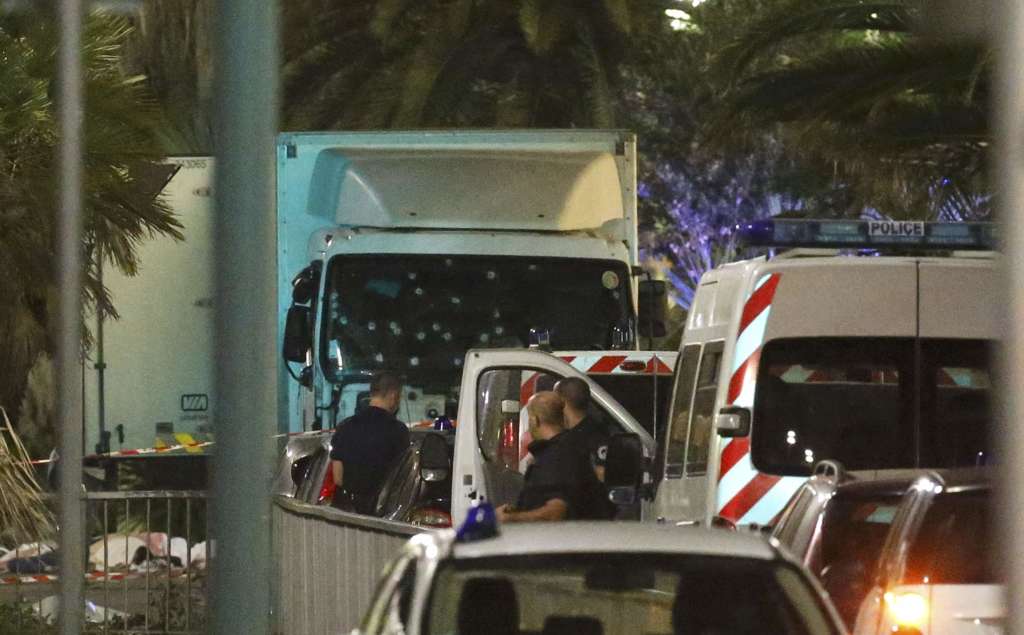Berlin-ISIS’ war on Europe seems to have entered a dangerous new phase, evolving from highly coordinated operations on the grand boulevards of Paris and Brussels to amateur assaults in the hinterlands that have suddenly turned anyone, anywhere into a target.
The rapid-fire nature of the attacks in Europe over the past two weeks is confounding European intelligence agencies, at times turning terrorism response into a ground war fought by already stretched local police.
Following the latest attack – the brutal slaying on Tuesday of a small-town priest in France – the violence has felt almost like the start of the uprising that ISIS has been attempting to spark among its sympathizers in the West for years.
The attackers have included mentally disturbed individuals inspired by the extremist group – which has in recent months increased its calls for “lone wolves” to act. But other assailants may have maintained at least indirect contact with the group. Adding to the chaos, there have been two additional highly violent attacks in Europe by assailants with no definable political motive at all, including an Iranian German teen who went on a shooting rampage in Munich.
Even the four attacks in two weeks claimed by ISIS – two in Germany, and two in France including the slaying of the priest – have been terrifyingly different.
The assailants’ weapons: a truck, an ax, a knife and a bomb.
Their victims: revelers enjoying Bastille Day fireworks, commuters on a Bavarian train, bystanders at a music festival and the priest. The locations: from small towns to the major coastal city of Nice.
The randomness of the attacks, experts say, is making it even more difficult for security services to do their jobs because the potential targets are virtually limitless, as are the means and the profiles of perpetrators.
“It’s a mass diffusion of the phenomenon, and it’s quite worrying that we’re seeing the attacks go in that direction,” said Raffaello Pantucci, a terrorism expert at London’s Royal United Services Institute.
If there is any pattern, it may lie in what Rita Katz, director of the U.S.-based SITE Intelligence Group, described as an intensification of ISIS’ long-standing effort to prompt violent acts by its sympathizers living in the West. She said her group, which monitors jihadist activity on social media, has detected an increase in ISIS’ output since May, when its spokesman issued an audio recording attempting to spur individuals not in direct contact with the group to take action.
“Calls for ‘lone wolf’ attacks from ISIS have increased in the West dramatically, especially after [each new attack] in the West,” she said.
The extremist group is also becoming more opportunistic and seeking out new niches. She noted, for instance, that the number of social-media and other ISIS messages in Portuguese have surged in the two months ahead of the Olympic Games in Rio de Janeiro, which start Aug. 5. Brazilian officials in recent days arrested 12 suspects – believed to be ISIS sympathizers – for allegedly plotting an unspecified attack on the Games.
A U.S. counterterrorism official said some of the recent attacks appear to involve affiliates of ISIS – while others don’t.
“We have come to view the threat of ISIS as a spectrum where on one end, individuals are inspired by ISIS’s narrative and propaganda, and on the other end, ISIS members are giving operatives direct guidance,” said the official, speaking on the condition of anonymity to discuss intelligence matters.
The new pattern is spreading fear in Europe, particularly in enclaves far from capitals like Paris and Berlin that once seemed the most likely targets. For nations already on maximum high alert, it is also severely testing security services, and putting more and more pressure on police.
One problem, experts say, is that detecting the attackers is not like sniffing out traditional terrorist cells. In Germany, for instance, two attacks were committed by asylum seekers – an ax-wielding Afghan teenager and a 27-year-old Syrian suicide bomber – who had pledged allegiance to ISIS. Both men appeared to provide pre-attack videos to the group before their assaults.
But German authorities, at least for now, believe they were otherwise unconnected to the group, and officials are still probing the extent to which they radicalized on their own. As the terrorism threat mounts, meanwhile, police have become so overburdened that some in Germany are already discussing whether to call out the army to deal with counterterrorism operations.
Police in Germany insist they are at their breaking point.
“There can’t be any illusion when it comes to our capacities, especially when several cities are hit at the same time,” said Rainer Wendt, federal chairman of the German Police Union. “We need at least 20,000 additional police officers, but even that won’t do.” The problem, he said, is that the recent attackers were not part of sophisticated terrorist cells. “If ISIS did have structures in Germany, we would be able to monitor them,” he said.
Wendt added that German police “long ago reached our limits” regarding the surveillance of terrorism suspects.
“My estimate is that there are about 400,000 to 500,000 migrants in our country who are unregistered or have assumed a false identity,” Wendt said.
He noted, for instance, that the Afghan attacker who on July 18 used an ax and a knife to injure five people, four of them on a Bavarian commuter train, looked older than 17, the age claimed on his documents.
There are other challenges in countries such as France, where police forces were reduced several years ago because of spending cuts and a desire to streamline a complex array of law enforcement agencies. Also, security services are largely focused on Paris – where the majority of the roughly 10,000 soldiers deployed in the country’s counterterrorism operation are based. Also a problem is that government agencies do not coordinate across jurisdictional lines.
The Washington Post
